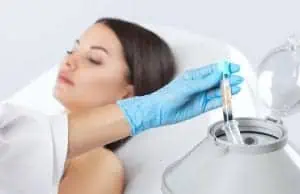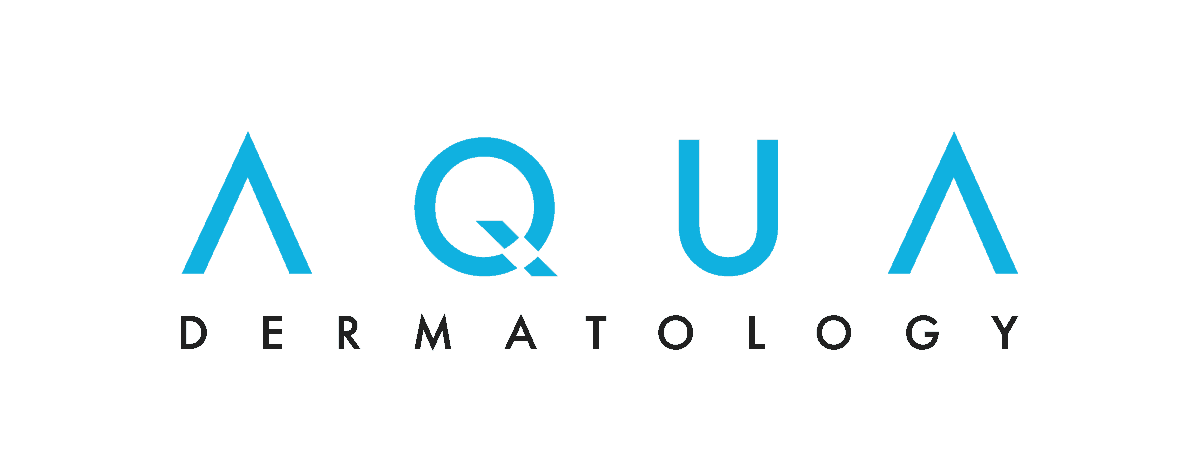
Medical Review By: Emmanuel Loucas, MD
Is your skin in need of a little rejuvenation? If you’re looking to brighten a dull complexion, tighten sagging skin or lessen the appearance of scars, wrinkles or sun damage, a relatively new treatment called a PRP facial, popularly known as a vampire facial, could be just the ticket.
What is a PRP facial?
PRP stands for platelet-rich plasma. In a PRP facial, plasma is taken from your own blood and then injected into your skin. That plasma is rich in platelets that contain proteins called growth factors.
“These growth factors stimulate fibroblasts, which are cells in the skin that produce collagen,” said Emmanuel Loucas, MD, a board-certified dermatologist at Water’s Edge Dermatology. “When you get PRP therapy, new collagen forms and plumps the skin, making it smoother and minimizing the appearance of fine lines, wrinkles and scars.” PRP therapy also boosts production of elastin, which increases skin’s elasticity.
PRP injections have been used for decades to help athletes heal from injuries. Only more recently have skin care providers begun using PRP injections for facial rejuvenation.
“Patients really like PRP therapy because it’s so natural,” said Dr. Loucas. “You’re being treated with platelets taken from your own blood.”
What to expect
When you arrive at your appointment, the doctor will draw 1 to 2 ounces of blood by placing a needle in your arm. The needle contains a small amount of anticoagulant to prevent the blood from clotting, so it may sting a little, Dr. Loucas said.
The blood is placed in a centrifuge to separate it into various components. The plasma rises to the top, and the lower part of the plasma layer, which is especially rich in platelets, is what is used for the injections.
The number of injections depends on the size of the area treated, but at least a couple of dozen injections with a small needle are typically needed for best results. Don’t worry, topical and injectable anesthetics can be used to minimize any discomfort.
Microneedling with PRP
In some cases, your provider may recommend adding microneedling to your treatment. Microneedling with PRP is performed by spreading the PRP on the skin and using a dermaroller (which resembles a mini paint roller coated with tiny needles) to create shallow pricks in the skin. The PRP enters the skin through these pricks. Microneedling on its own also boosts collagen production.
Some doctors use both injections and microneedling. “Combining the two approaches can lead to better results because you’re triggering collagen production in both the dermis [the thick layer of skin beneath the epidermis] and the epidermis,” Dr. Loucas explained.
PRP facial downtime
Recovery from a PRP facial is brief. The treated areas of skin may be a little red at first, but the redness fades in a few hours. You may experience minor swelling for a couple of days. Microneedling may also cause slight bruising, which clears up within four or five days.
How many treatments are needed?
A full course of PRP therapy is three treatment sessions spaced eight weeks apart. Improvement builds over time as collagen production increases. You’ll see the most improvement several weeks after you’ve had all three sessions, but many patients say they can see a difference after just one session, according to Dr. Loucas.
To maintain optimal results, consider undergoing maintenance treatments every six to 12 months.
The best candidates for PRP therapy
PRP facials work best when the skin still has a fair amount of collagen in it, said Dr. Loucas. “PRP isn’t very effective once the skin is very thin and has lost elasticity.”
Most people can safely undergo PRP treatments. Those who have severe inflammation in the area to be treated from a condition such as eczema or psoriasis should wait until the inflammation is cleared. People with a severe immune system disorder should talk with their doctor before undergoing treatment.
Possible risks and side effects
Because it uses your own plasma, PRP treatment is generally safe and well-tolerated. While there’s a risk of infection whenever you puncture the skin, the provider takes steps to minimize it. Other risks include injury to the blood vessels or nerves, calcification at the injection site and development of scar tissue.
When it comes to choosing a provider for your PRP facial, training and experience counts.
“There is an art to performing PRP therapy, so you really want to see a knowledgeable provider who won’t administer it robotically,” Dr. Loucas. “That way, you’ll get the best results for your money.”
Article Written By: Jessica Brown, a health and science writer/editor based in Brooklyn, New York. She has written for Prevention magazine, jnj.com, BCRF.org and many other outlets.





